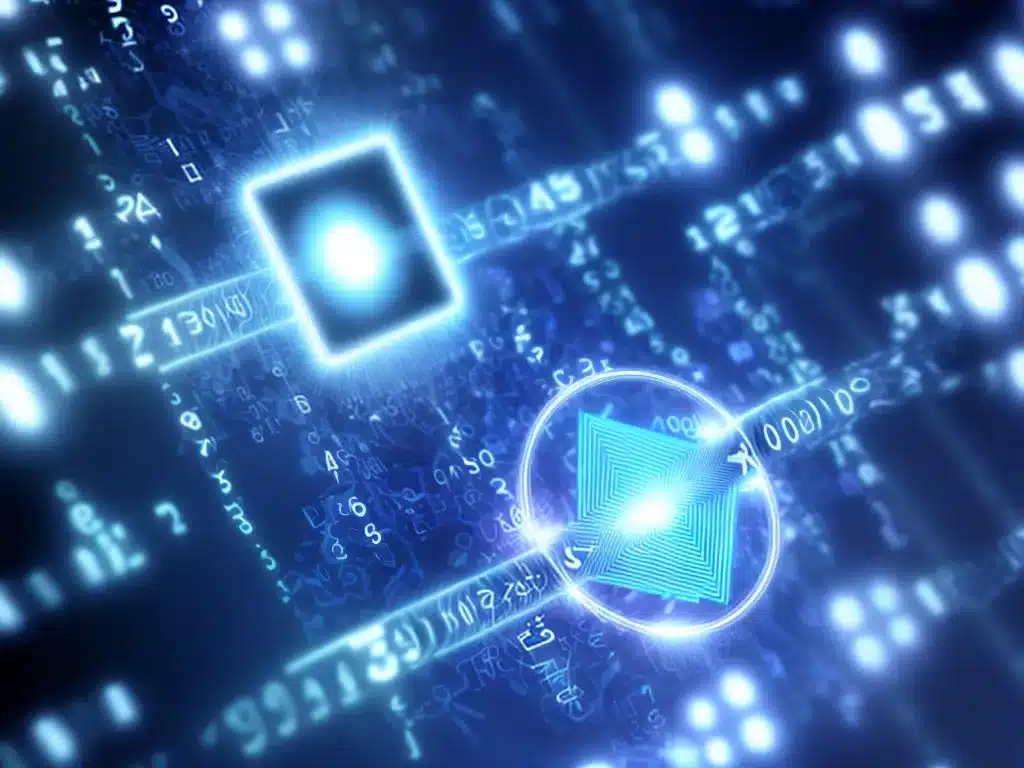
Introduction
Random numbers are essential for many applications, from statistical sampling to cryptography. However, generating true randomness is notoriously difficult. Quantum random number generators offer a promising solution by exploiting the inherent unpredictability of quantum mechanics. As an information security enthusiast, I decided to research this fascinating field to understand how quantum generators work and their role in enabling unbreakable encryption.
How Quantum Random Number Generators Work
Quantum random number generators (QRNGs) rely on measuring quantum processes that are fundamentally probabilistic, such as photon emission or quantum tunneling. By careful experimental design, the intrinsic randomness of these quantum events can be extracted to generate a string of random bits.
The most common approach is measuring quantum states of light. For example, a QRNG may send individual photons onto a 50/50 beamsplitter, where there is an equal chance of reflection or transmission. Detecting the path of many photons will generate a random bit sequence. Other designs measure photon arrival times or vacuum fluctuations to extract randomness.
These quantum processes are governed by the laws of quantum mechanics. In contrast to classical processes, it is impossible, even in principle, to predict the outcome in advance. This enables QRNGs to produce true randomness, unlike algorithmic pseudorandom number generators.
Post-Processing for Usable Random Numbers
The raw output from a QRNG may contain biases and correlations that need to be removed to produce a uniform distribution. Post-processing techniques such as randomness extraction circuits and cryptographic hash functions are applied to distill the entropy into an unbiased, independent stream of random bits.
Proper post-processing plays a critical role in ensuring the final random numbers pass statistical tests and are suitable for real-world applications. Rigorous testing and public scrutiny of QRNG designs by the scientific community gives confidence in their outputs.
Applications of Quantum Random Numbers
High-quality randomness is crucial for many aspects of information security:
-
Cryptographic keys – Random numbers are used to generate the private keys for RSA, Diffie-Hellman, and other algorithms. Quantum randomness ensures the keys cannot be predicted.
-
One-time pads – Unbreakable encryption can be achieved by combining a random key that is used only once with the plaintext using XOR. QRNGs can produce these one-time pads.
-
Seed values – Random seeds are needed to initialize pseudorandom number generators or shuffle operations. QRNGs provide ideal entropy sources.
-
Proof-of-stake protocols – Random election of validators in blockchain networks avoids manipulation and requires genuine randomness.
-
Simulation & sampling – Many Monte Carlo simulations and statistical sampling applications depend on high-quality randomness as input.
Quantum randomness thus serves as a crucial ingredient enabling many information security and cryptographic protocols. Given the risk of backdoors in algorithmic generators, QRNGs are an appealing source of trustworthy randomness.
Real-World Implementations
Practical QRNG devices taking advantage of these principles are commercially available today from vendors such as ID Quantique and QuintessenceLabs. Chips capable of generating quantum randomness are being integrated into hardware security modules or incorporated into cybersecurity standards by organizations like NIST.
These implementations quantify the amount of randomness extracted from the raw quantum measurements, known as the min-entropy. Ongoing testing ensures the output remains unpredictable, avoiding issues like the loss of unpredictability from device wear and tear over time.
As demand grows for cryptographic applications, optimizing the performance, cost-effectiveness and form factor of QRNG devices remains an active area of research and innovation.
Outlook for the Future
Quantum random number generators are an elegant example of turning the weirdness of quantum physics into a useful application. Their role in enabling provably secure cryptography and simulations is only likely to grow in the future, especially with the advent of quantum computers. As QRNG technology continues maturing, we can look forward to their widespread adoption across industries like finance, security, medicine and more.
The intrinsic uncertainty fundamental to the quantum realm provides humanity with a limitless source of perfect randomness for the first time. Exploiting this strange property through QRNGs brings us a step closer to the dream of unbreakable encryption securing our information well into the future.
Conclusion
In summary, quantum random number generators tap into the fundamental randomness at the heart of quantum mechanics to generate true random bits. Sophisticated post-processing ensures the output can pass statistical tests and suit real-world applications needing high-quality randomness, especially cryptography. With ongoing research to improve performance and adoptability, QRNGs serve as an innovative platform for enabling provably secure encryption, simulations, and security protocols relying on unpredictability.












